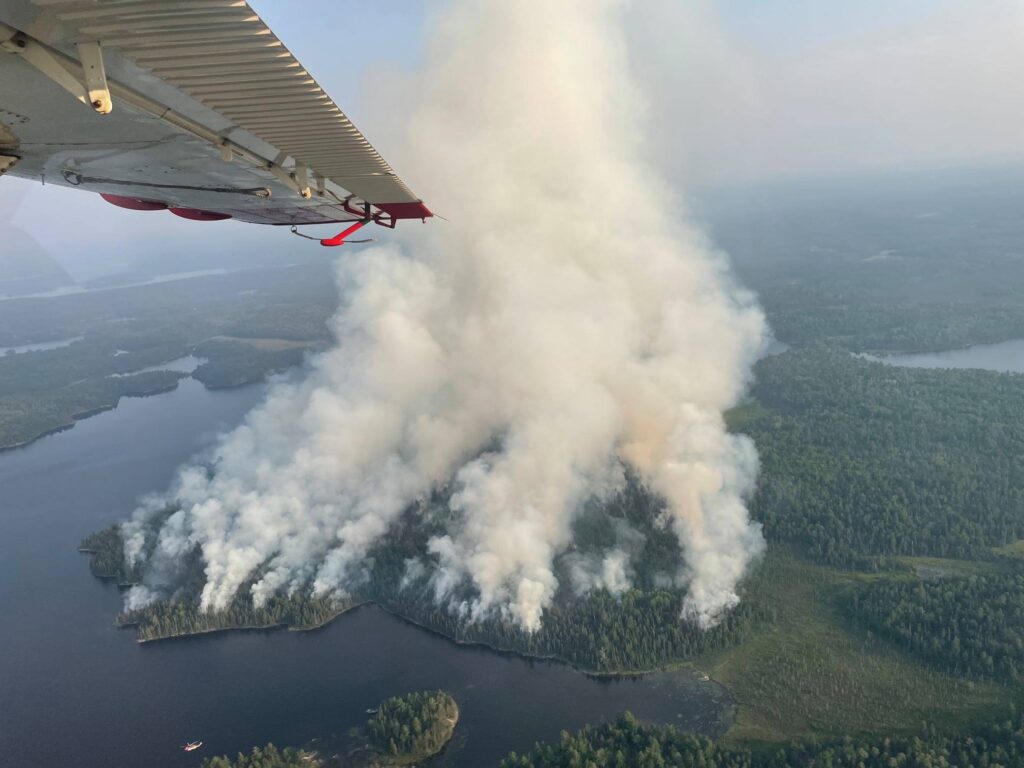
Fire is a natural and important part of the Boundary Waters ecosystem, but can also present threats to people and property. A recent report from the Superior National Forest details the actions taken in the summer of 2021 to minimize the risks and maximize the benefits of one fire in the wilderness.
The Fourtown Lake Fire ultimately burned 265 acres of forest on the west side of the BWCAW in July of last year. At the time, it was the second largest blaze yet recorded for the year. It was one of numerous wildfires that flared up during the summer’s drought, which also included the damaging Greenwood Fire outside the wilderness.
The Fourtown fire was ignited by lightning around July 25, 2021. It was burning next to Fourtown Lake, with water on essentially three of four sides. Within two days, fire managers had agreed on a management strategy to allow the fire to continue burning while ensuring it would not spread outside acceptable boundaries.
“Combining fire suppression techniques and fire management strategies prove healthier for the ecosystem and a safer way to suppress fires, keeping wildfire from impacting the wild land urban interface,” the report reads.
Agency personnel ruled out other options for responding to the fire. Simply letting it burn was deemed to dangerous, with the dangerous fire conditions that could have caused it grow wildly and threatening. Sending in firefighters on foot to cut a line around the fire that could contain it was considered too difficult and slow, with expectations it would take several days simply to access the site due to dense brush. With the dry and windy weather, the fire could have escaped before their work was complete.

Instead, some firefighters were sent to the site to help hold the fire, and a helicopter dropped water along areas where they hoped to stop its spread. Then a helicopter crew dropped ignition devices, small flammable balls often compared to Ping Pong balls, while ground personnel ignited other parts of the burn. Afterwards, the firefighters stayed on the site for 12 more days to ensure it was contained. Nearly a month later, the Forest Service reported it was still producing smoke, but did not seem to be a threat.
The agency deemed the strategy would not only be safer for humans, but better for the forest. Despite hot and dry conditions, the fire burned some areas more intensely than others, leaving a diverse and healthy ecosystem. A year after the fire, there was abundant regrowth and evidence of the natural mosaic that is common with boreal wildfires.
“One year after the Fourtown Fire, new growth is abundant, and ground species, like fire weed are thriving,” the agency says. “There are areas of high fire intensity, but also areas of low intensity where large fire-resistant species of red, white, and jack pine will seed the next generations. New growth from aspen, birch, maple, and brush species provides deer and moose with browse. You will notice large areas of dead balsam fir throughout the burned area. Most of these trees will drop their needles within the next few years and fall to the ground, beginning the natural decay process.”
View the full report here or embedded below:

